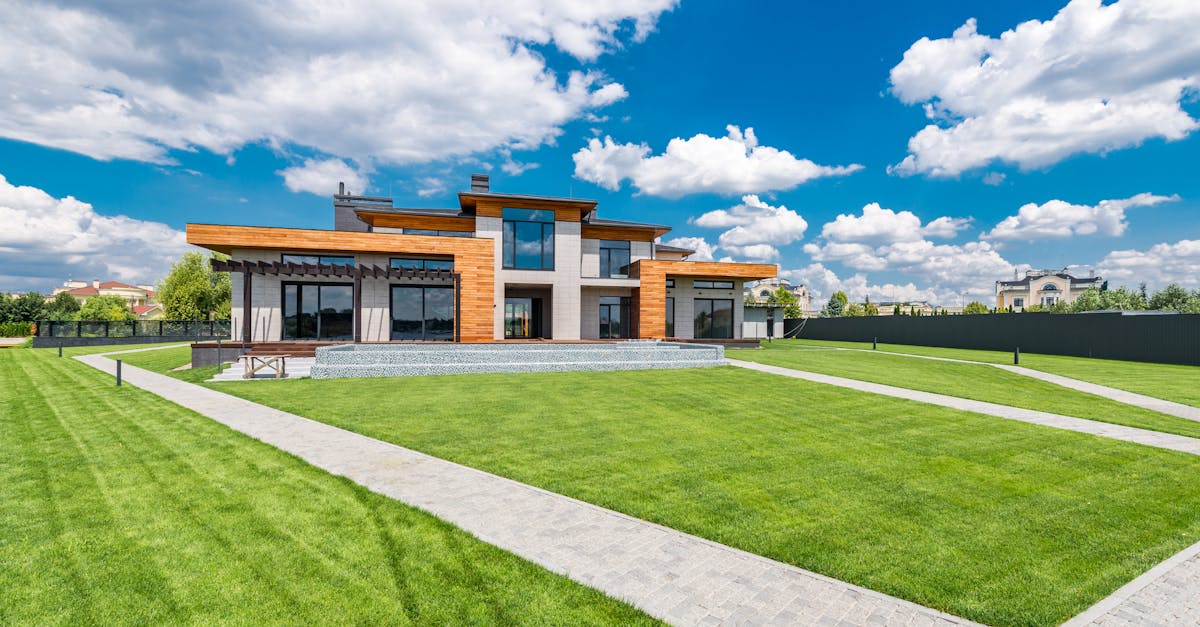
Understanding the Importance of Edge Restraints in Granite Cobblestone Paver Installation
Table Of Contents
Maintenance Tips for Edge Restraints
When it comes to maintaining edge restraints in your granite cobblestone paver installation, regular inspection and prompt repairs are crucial. Make it a habit to periodically assess the condition of the edge restraints for any signs of damage or wear. Look out for issues such as cracks, loose fasteners, or gaps between the restraints and the pavers. Addressing these issues early on can prevent further damage and ensure the stability of your paved area.
Factors to Consider When Selecting Edge RestraintsIncorporating Pavers into Different Landscaping Styles
When selecting edge restraints for granite cobblestone paver installation, it is crucial to consider the material of the edge restraint. The material should be durable, weather-resistant, and able to withstand the weight of the pavers. Steel, aluminum, concrete, and plastic are common materials used for edge restraints. Each material has its own set of advantages and disadvantages, so it's important to choose one that best suits the specific requirements of the project.EcoFriendly Advantages of Granite Cobblestone Pavers
Additionally, the style and design of the edge restraints should complement the overall aesthetic of the landscape. The edge restraints not only serve a functional purpose but also contribute to the visual appeal of the paved area. Choosing edge restraints that blend seamlessly with the granite cobblestones can enhance the overall look of the installation. Moreover, the height and thickness of the edge restraints should be chosen based on the intended use of the paved area and the expected traffic load to ensure long-lasting performance and stability.
Climate and Environmental ConditionsSustainable and Recyclable Properties
Australia’s diverse climate and environmental conditions play a significant role in determining the most suitable edge restraints for granite cobblestone paver installations. In regions with extreme temperature variations, such as the arid Outback or the tropical Queensland coast, edge restraints must be able to withstand the harsh conditions without warping or deteriorating quickly. The scorching heat and intense sunlight in some parts of the country can cause materials to degrade over time, making it crucial to select edge restraints that are highly durable and UV-resistant to maintain the structural integrity of the paver installation.CostEffective Solutions with Granite Cobblestone Pavers
Moreover, the environmental factors, such as heavy rainfall in coastal areas or the presence of saltwater in marine environments, can impact the longevity of edge restraints. Excessive moisture and salt exposure can lead to erosion, corrosion, or rusting of certain materials, compromising the stability of the granite cobblestone pavers. When choosing edge restraints in regions prone to high levels of precipitation or near saltwater bodies, it is essential to opt for materials that are resistant to rust and corrosion to ensure the longevity and performance of the paver installation.
Edge Restraints vs. No RestraintsBudgetFriendly Installation and Maintenance Tips
Landscaping styles can greatly influence the overall aesthetic of your outdoor space. When it comes to incorporating granite cobblestone pavers, there are various landscaping styles that can complement these versatile materials. For a modern and sleek look, consider using granite cobblestone pavers The use of edge restraints provides structural support, prevents spreading, and enhances the overall aesthetic appeal and functionality of the installation. Conversely, not using any restraints can lead to shifting, displacement, and a compromised longevity of the cobblestone pavers.in a linear pattern to create clean lines and a contemporary feel in your outdoor design. This style works well with minimalist landscaping themes, adding a touch of sophistication to your space.
If you prefer a more rustic or traditional landscaping style, opt for a random pattern layout using granite cobblestone pavers. This approach creates a charming and natural look that can enhance the character of your outdoor area. By mixing different sizes and shapes of pavers in an irregular arrangement, you can achieve a timeless and classic feel that blends seamlessly with a range of garden designs. Experimenting with different placement combinations can add depth and visual interest to your landscape, making your outdoor space more inviting and appealing.Related LinksEcoFriendly Advantages of Granite Cobblestone Pavers
Securing Granite Cobblestone Pavers with Jointing SandGranite cobblestone pavers offer a range of ecological benefits that make them a sustainable choice for landscaping projects. One significant advantage is their durability, which reduces the need for frequent replacements and ultimately minimizes waste. This longevity is a key factor in the eco-friendliness of granite cobblestones, as it means that they have a much lower environmental impact compared to materials that need to be replaced more often.Tips for Cutting Granite Cobblestone PaversIn addition to their durability, granite cobblestone pavers are also recyclable, making them an environmentally responsible choice for outdoor spaces. When these pavers do eventually reach the end of their lifecycle, they can be repurposed or recycled rather than adding to landfill waste. This recyclability further underscores the eco-friendly nature of granite cobblestone pavers and highlights their contribution to sustainable landscaping practices.
Maintaining Proper Drainage for Granite Cobblestone Paver InstallationSustainable and Recyclable Properties
Applying a Sealer to Granite Cobblestone PaversGranite cobblestone pavers offer sustainable and recyclable properties that make them an eco-friendly choice for various landscaping projects. One of the key advantages of granite cobblestones is their durability, which makes them a long-lasting option for outdoor spaces. Unlike other materials that may deteriorate over time, granite cobblestones can withstand harsh weather conditions and heavy foot traffic, reducing the need for frequent replacements and repairs.
Final Inspections and Cleaning for Granite Cobblestone Paver InstallationIn addition to their durability, granite cobblestone pavers are also recyclable, contributing to sustainable practices in landscaping. When these pavers reach the end of their lifespan, they can be repurposed into new projects or recycled to create other construction materials. By choosing granite cobblestone pavers for your outdoor design, you not only enhance the aesthetic appeal of your space but also contribute to environmental conservation efforts through their sustainable and recyclable properties.
CostEffective Solutions with Granite Cobblestone Pavers